SIEM - Tool for ensuring security incident insights
Security engineers are confronted with a vast amount of data that is very difficult to review. Modern Security Information and Event Management (SIEM) systems use automation to sift through a plethora of events and contextual data and identify those that pose a threat and need to be addressed, resulting in reduced incident detection, response and resolution times.
In order to effectively correlate events, SIEM (Security Information and Event Management) systems rely not only on log records but also on network behaviour analysis, traffic flow analysis, and events occurring on endpoint devices, including both servers and user devices. To ensure valuable insight across all three levels, SIEM systems either have their own dedicated modules or are integrated with dedicated solutions such as threat intelligence feeds.
Why SIEM solution is a must for rapid threat detection?

Insight into IT system operations
Get transparent insight into what is happening in the IT infrastructure by reviewing security logs, log files, access validation, network monitoring, etc.

Identify threats quickly
SIEM allows you to detect security threats and respond to them in real time, while also being effective for detecting internal threats or privilege abuse.

Security incident detection and analysis
Effective and rapid detection is the basis for resolving security incidents. SIEM evaluates the severity of an incident, enabling effective action to contain the attack or restore the system.

Regulatory compliance
By storing audit trails, SIEM ensures compliance with regulations such as the GDPR, the EU NIS2, the Information Security Act, ISO 27001.
Contacts
Frequently Asked Questions
The use of traditional SIEM systems has typically been limited to compliance and focused on the collection and storage of log records generated by network and security infrastructure, essentially serving as a log management solution. Beyond their role in ensuring compliance with regulations such as GDPR, EU NIS, and the Information Security Act, modern SIEM systems serve as tools for defending against a wide array of security incidents and cyberattacks. They provide functionalities for rapid threat detection and response significantly reducing the the time between the initiation of an incident and its detection, as well as the time required to respond to and resolve the incident.
While SIEM collects data and detects incidents, SOAR (security orchestration, automation and response) is primarily needed at the moment an incident occurs. SOAR offers a multitude of benefits, including the standardization of processes and reduction of manual tasks, streamlined operations, minimized impact of cyber attacks, simplified tool and technology integration, automated reporting and metrics, accelerated response times, and optimized utilization of threat intelligence resources.









